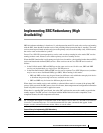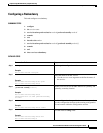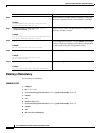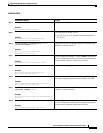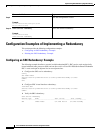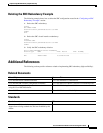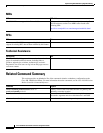
Implementing SBC Redundancy (High Availability)
Contents
SBC-112
Cisco IOS XR Session Border Controller Configuration Guide
Contents
• Prerequisites for Implementing Redundancy, page SBC-112
• Information About Implementing Redundancy, page SBC-112
• How to Implement Redundancy, page SBC-112
• Configuration Examples of Implementing a Redundancy, page SBC-116
• Additional References, page SBC-117
• Related Command Summary, page SBC-118
Prerequisites for Implementing Redundancy
The following prerequisites are required to implement SBC redundancy:
• You must be in a user group associated with a task group that includes the proper task IDs for SBC
commands being used. For detailed information about user groups and task IDs, see the defined task
ID required per command in the Cisco IOS XR Session Border Controller Command Reference.
• You must install and activate the package installation envelope (PIE) for the SBC software.
For detailed information about PIE installation, refer to the Upgrading and Managing Cisco IOS XR
Software module in the Cisco IOS XR Getting Started Guide.
• Before implementing interworking SBC redundancy, the SBC must already be created. See the
procedures described in the “SBC Configuration Prerequisites” module.
Information About Implementing Redundancy
SBC fault tolerance is based on a 1:1 paired-protection model. For each service card running active SBC
components, there can be one service card providing failure protection. The same services must be
provisioned on both cards (one as the primary card, one as the standby card), and the service cards are then
said to be paired. Although from an Cisco IOX XR system perspective, service cards are always running in
active mode, SBC services running on these cards run as either the primary service or the standby service.
How to Implement Redundancy
Redundancy configurations are described in the following sections:
• Configuring a Redundancy
• Deleting a Redundancy



